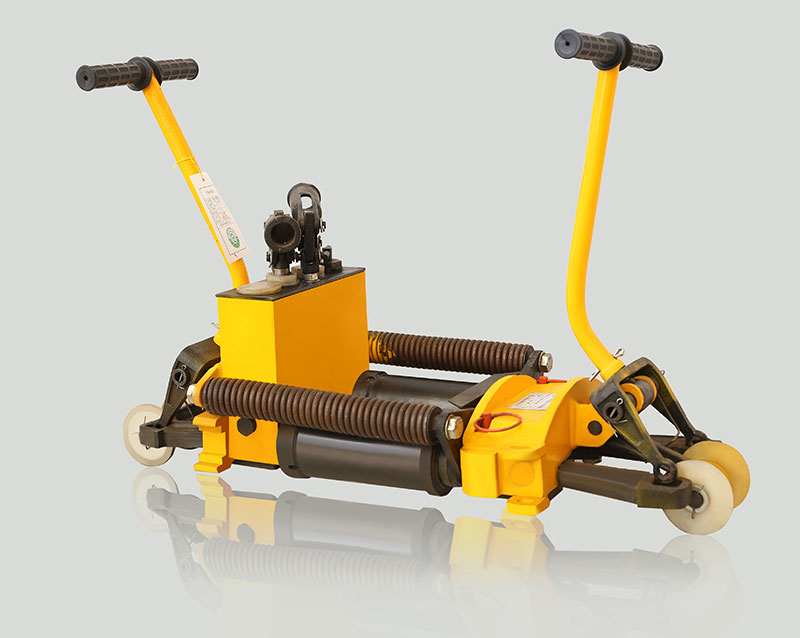
Maintenance and repair
1. Daily maintenance
1.1 before operation, check whether there is looseness and leakage at all fasteners and seals. If the above conditions are found, deal with them in time.
1.2 dust and oil stain shall be wiped in time to keep machines and tools clean. Check whether all parts are complete and intact, and deal with defective parts in time.
1.3 oil shall be applied frequently between the rail clamping wedge iron and the clamp body to avoid the wedge iron jamming.
2. Regular maintenance
2.1 replace the hydraulic oil every six months. While changing the oil, carefully clean the oil tank to make it clean, and then inject new hydraulic oil.
2.2 disassemble and check all seals and their main connecting and fastening parts. Such as oil tank cover seal, oil pump seal, etc. if the sealing ring is found to be poor or invalid, it shall be replaced at any time. The shaft, pin, safety device, etc. of the running part shall be repaired or replaced in time in case of defects and parts damage.
Common faults and troubleshooting
Common faults | Reason | Exclusion method |
The oil pump cannot pump oil | The oil suction and oil outlet channels are blocked, or the steel balls of several safety valves of the check valve are padded with foreign matters, and the steel balls do not reset, resulting in failure. | Open the oil tank cover, remove the plunger and pump seat, clean or treat it, and replace it if necessary. |
Poor sealing at the connection of oil pump body, aging, damage or loose connection of O-ring. | Replace the sealing ring | |
The Y seal ring on the oil pump plunger is damaged. | Replace the sealing ring | |
The oil return valve is not tightly closed | Disassemble and inspect all parts, replace damaged parts, and tighten the oil return valve. | |
System pressure too low | The wear of oil pump parts is too limited, the matching clearance is too large, and the pump seat is loose. | Replace, plunger or pump sleeve |
The adjusting bolt of the safety valve is loose or the spring of the safety valve fails. | Repair and replace if necessary | |
The oil return valve is not tightly closed. | Check and repair | |
Rail clamping failure | The wedge iron of clamping rail is damaged or the tooth surface is seriously worn. | Check the rail wedge and replace it in time if it is damaged. |
Insufficient cylinder thrust | The Y-ring seal on the cylinder plunger is damaged. | Replace the sealing ring with a new one. |
The reset of two oil cylinders is not synchronized | The tension of the return spring is unbalanced. | Replace the return spring. |
Cylinder plunger is deformed or bruised. | Check and replace if necessary | |
System operating pressure too high or too low | Install a pressure gauge at the screw plug on the side of the main valve body to check the system pressure. When it is less than or higher than 48mpa. | Open the oil filling hole, tighten the constant pressure adjusting nut to the right, press the pump, and observe the pressure gauge. If it is too high, turn it in the opposite direction. |
The hand pump works normally, but the extension length of cylinder plunger is not enough | Insufficient hydraulic oil. | Add hydraulic oil. |
Oil return failure | The oil return port is blocked. | Unscrew the oil passage plug on the side of the main valve body, drain the oil and replace it with new oil after cleaning. |